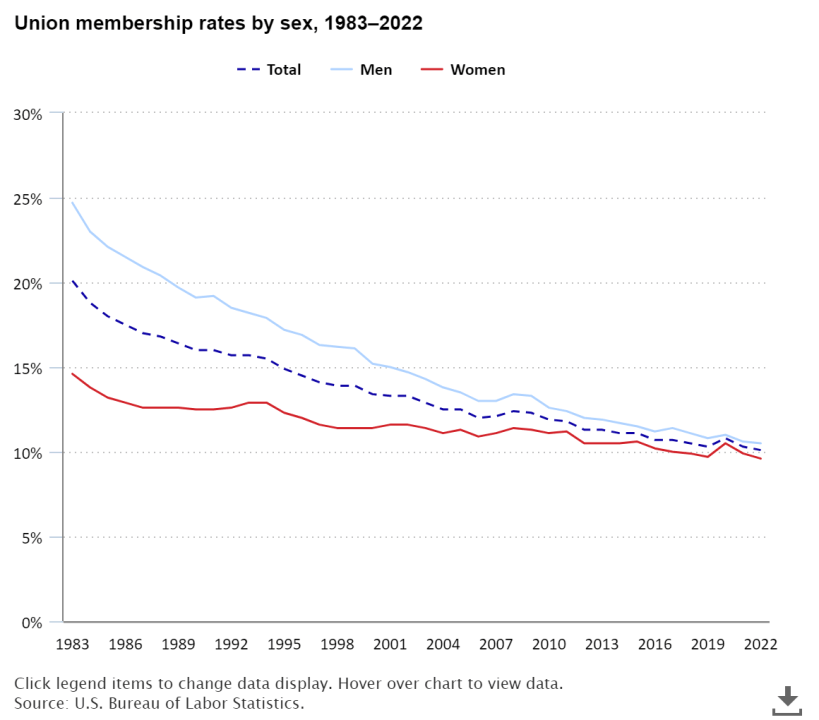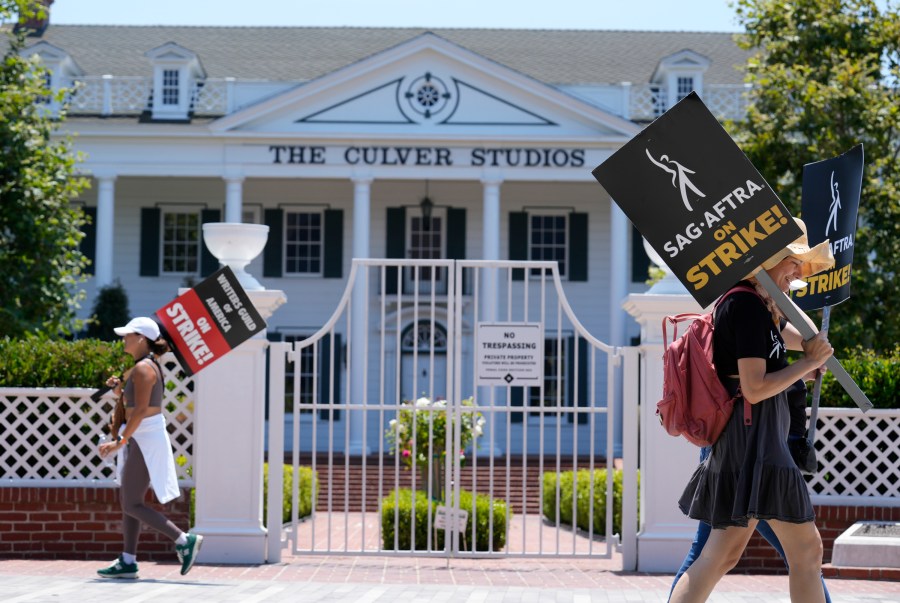(NewsNation) — While the rate of work stoppages in 2023 is on pace to break the record set last year, union membership is still lagging at a record-low.
So far, there have been 251 strikes in 2023, compared to 417 in 2022, according to data compiled by Cornell University’s Labor Action Tracker. Last year’s 10.1% unionization rate was the lowest on record, however, and workers have a long way to go to reach the 20% rates not seen in 20 years.
While no comprehensive data exists detailing the success rate of recent worker strikes or labor disputes nationwide, some union workers have gotten their way this year.
On Aug. 31, the country’s largest locomotive manufacturer finalized an agreement with its union workers, about 1,400 of whom walked off the job at a Pennsylvania plant.
The agreement between Local 506 of the United Electrical, Radio and Machine Workers of America last Wednesday and Wabtec Corporation brought an end to a 10-week strike.
It called for wage increases, improved the grievance process, and provided other benefits, the Associated Press reported, citing Wabtec Corporation. The company did not disclose the agreement’s conditions in detail.
Earlier this summer, the threat of a United Parcel Service strike was also called off when Teamsters voted in favor of a new agreement that included more than 60 total changes and improvements.
The new agreement included historic wage raises and new safety and health protections, created thousands of new full-time union jobs and ensured drivers wouldn’t be forced to work overtime on their days off.
Americans’ opinions about labor unions are growing more favorable post-pandemic as workers continue to negotiate for better pay and working conditions in several high-profile strikes and walkouts.
A new report from Gallup detailed Americans’ increasing support of unions, which have the potential to roll back wage inequities and improve the nation’s economy, according to the United States Department of Treasury.

Although union membership has been declining for decades, more Americans now than in previous years believe unions mostly help rather than hurt both members and non-members.
In the current Screen Actors Guild and American Federation of Television and Radio Artists strike, for example, Americans sympathize more with the television and film writers than with the production studios 72% to 19%, Gallup data showed.
They also believe unions improve the U.S. economy — an opinion backed up by the U.S. Treasury Department this week.
According to that report, more unionization can help reverse inequities that have been building for the past 50 years and create better financial stability for people in the middle or bottom of the income distribution.
“If nothing else, unions can publicize CEO wages (and) then they can use it as a bargaining tool,” said David Jacobs, a political science professor at Ohio State University.

Unions tend to have more negotiating power in an economy like the one we’re in now — where the labor market is tight and support for unions is on the rise, he said.
“First, labor gets scarce… and when inflation occurs, wages stay behind prices and that gives folks an incentive to strike,” he said.
The COVID-19 pandemic also contributed to employees’ expectations. Workers experimented with working from home and were introduced to a series of other flexible work environments and accommodations that later disappeared, said an American University adjunct business professor also named David Jacobs.
“They kind of learned a lesson in the possibility of things being different,” he said. “And they also experienced some pain that led them to believe that things could be better and that they should organize to make things better.”
Higher profile disputes like the writers and actors strike, or negotiations involving Starbucks, Amazon, or the United Automobile Workers (UAW) union are a reflection of that growing support, the American University professor said. Down the road, those efforts could encourage other union workers to ask for better conditions or non-union workplaces to offer them.
“A strike that is successful, that generates rewards for workers, obviously gives other workers reasons to consider the possible benefits of unionization,” Jacobs, of American University said.
While unions may be more powerful and supported than in recent years, building up membership will take a change at the legislative level, he said.
Being fired for supporting a union is an unfair labor practice, he noted, and persistence in the face of that adversity isn’t always worth the payoff.
“Suppose you get fired,” he said. “What are your options? The National Labor Relations Board might hear your inquiry — in about two years. You get your job back — maybe, and you get back pay… the only thing the corporation will have to do is promise not to do it again. So it’s very difficult to organize under those rules.”
The treasury department’s findings also support claims legislation protecting unionizing workers could benefit the nation’s economy. The decline in worker bargaining power, reflected in the union membership rate dropping from 1/3 to today’s 10%, had macroeconomic repercussions over the past 60 years, the report found.
“Therefore, policies that serve to strengthen worker bargaining power could contribute to a slowing or reversal of those macroeconomic trends,” the spokesperson told NewsNation in an email.
President Joe Biden has used executive actions to promote worker organizing. He authorized federal funding to aid union members’ pensions and has been supportive of unionization efforts against entities like Amazon.
“We have important test cases here,” said Jacobs, of American University. “The direction of the future depends upon these major battles.”